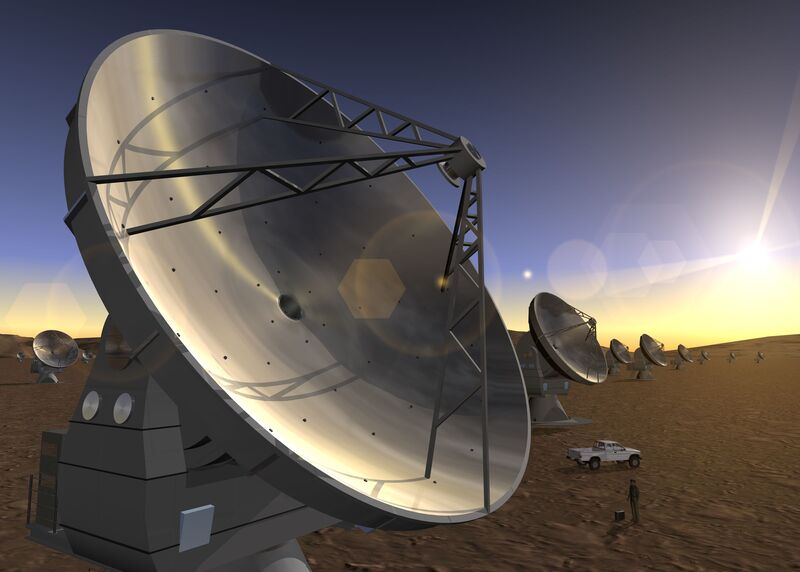ALMA Array at Sunset 2
Description
The Atacama Large Millimeter Array, or ALMA, is an international collaboration to develop a world-class telescope composed of a group of 64 radio-telescope antennas that will work together to study the universe from a site in the foothills of Chile's Andes Mountains. Each of ALMA's 64 antenna dishes will measure 39 feet (12 m) wide. The ALMA antennas will be movable. At its largest, the array will measure 10 miles wide (14 km), and at its smallest, only 500 feet (150 m). The ALMA correlator, or specialized computer that combines the information received by the antennas, will perform an astounding 16,000 million-million (1.6x1016) operations per second. ALMA's location in the Atacama Desert is one of the highest, driest places on Earth, making it ideal for astronomical research at millimeter wavelengths, which are absorbed by atmospheric moisture. When completed (in 2011), ALMA will be the largest and most capable imaging array of telescopes in the world. For more information, please visit the ALMA homepage.
Creator
Records of the NRAO
Rights
ALMA/ESO/NAOJ/NRAO
Type
Still Image
Identifier
eso_arrayatsunset2_hi.jpg
Location
Photographer
Notes
Contact NRAO Archives for a high resolution tiff of this image.
Series
Photographs Series
Unit
MMA/ALMA Unit
Citation
Records of the NRAO, “ALMA Array at Sunset 2,” NRAO/AUI Archives, accessed May 21, 2025, https://www.nrao.edu/archives/items/show/36750.

